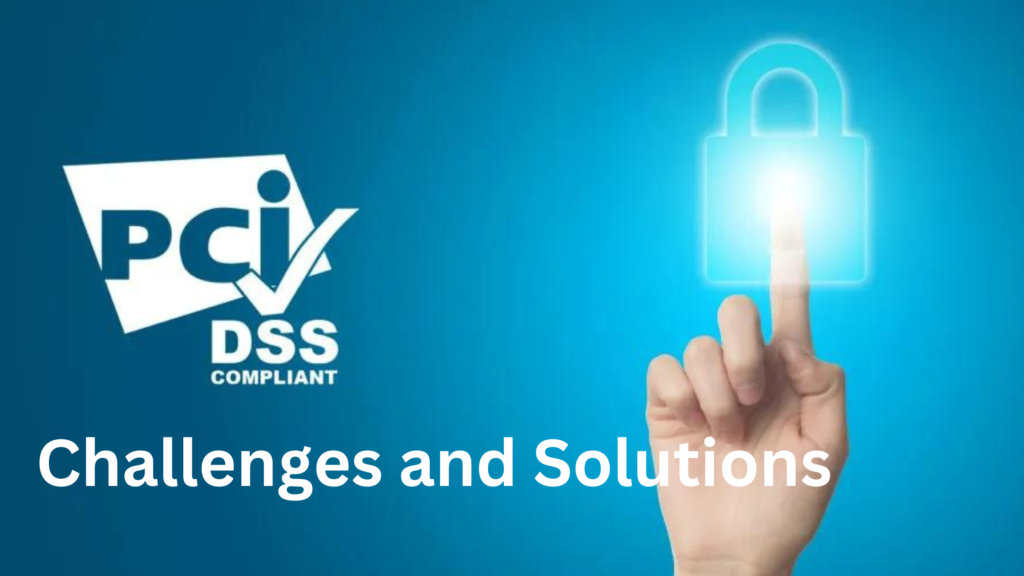Safeguarding sensitive cardholder data is essential in the digital age, as payment card transactions form the basis of many financial activities. A key foundation for safeguarding credit card information and preserving a safe payment environment is the Payment Card Industry Data Security Standard (PCI DSS).
Any businesses that receive, store, or share cardholder data are required to comply with PCI DSS v4. However, companies face a variety of obstacles and challenges when putting the standard into practice, making compliance difficult at times. So, understanding about PCI DSS Compliance Challenges and solutions helps in navigating the process:
What Is PCI DSS?
Have you thought about What is PCI DSS? And where is it used? It is a standard for information security known as PCI DSS (Payment Card Industry Data Security Standard) that aims to lower credit card fraud by tightening security measures related to cardholder data.
PCI DSS is not a legal or regulatory requirement. The PCI SSC (Payment Card Industry Security Standards Council) is responsible for overseeing the Standard, which is the outcome of a partnership among the main payment companies.
However, companies that handle and retain credit, debit, and other payment card transactions often include this as a contractual requirement. To create and preserve a secure environment for their clients, contractually bound enterprises need to comply with PCI DSS criteria.
In 2004, five significant credit card firms created PCI DSS. The Payment Card Industry Security Standards Council (PCI SSC) formed the guidelines for PCI DSS.
Benefits PCI DSS Compliance
Before understanding PCI DSS Compliance Challenges, here are the benefits you should know about PCI DSS compliance:
- Protect the cardholder information.
The cardholder data that clients provide for management or payment is the primary benefit of PCI DSS compliance. As a business handling cardholder data, it is the duty of business to keep this data safe by putting in place the appropriate security measures as cyber threats evolve.
- Increases client assurance
Adhering to PCI DSS demonstrates customers that the company take the security of their private information seriously. Customers will feel far more comfortable providing sensitive cardholder data to you if they can see that it is safe with you.
- Complying with industry norms
A company’s reputation with partners, stakeholders, and regulators is strengthened by PCI DSS compliance, which shows a dedication to industry best practices.
- Efficiency in Operations
By simplifying payment procedures, PCI DSS compliance increases operational efficiency. Businesses can reduce the risk of fraud and unlawful transactions by putting secure systems and protocols in place. This safeguards the company and guarantees easier, more effective operations, which is useful to the customers as well as the enterprise.
- Competitive edge
Adherence to PCI DSS might offer a noteworthy edge over competitors. Businesses that highlight these features and make their compliance status known can draw in customers who share these priorities. Being PCI DSS compliant also sets firms apart from their non-compliant rivals, presenting them as reliable and conscientious guardians of client information.
Read More: The Ultimate PCI DSS Compliance Checklist
Top PCI DSS Compliance Challenges
It should come as no surprise that there would be some difficulties when the advantages are so significant. The list of PCI DSS Compliance Challenges is as follows:
- PCI DSS is highly technical
Achieving compliance in case that your company handles credit card data requires an awareness of PCI DSS’s technical standards. The types of technology-based safeguards that must be in place, as well as their structure and method of implementation, are specified by the standards.
To prevent malicious attacks, for example, mechanisms must be in place to guarantee that software updates on a regular basis and that encryption tools are used whenever sensitive data is transferred.
- Inappropriate Segmentation and Scope
Currently, achieving PCI DSS compliance may be one of your biggest obstacles. Improper scope and segmentation of cardholder data might lead to harmful outcomes.
Sensitive data is more likely to be accessed by hackers, for instance, if a company doesn’t isolate the cardholder data environment from the rest of its system. Because of this, retail businesses should make sure they plan and document every aspect of their cardholder data environment appropriately.
- Cost of Compliance
The expense of putting security measures in place and keeping them up to date is one of the difficult PCI DSS Compliance Challenges. This covers expenditures for employee training, software, hardware, audits, and continuing maintenance.
Even if the initial expenses can be high, businesses need to see them as an investment in minimizing the possible harm to their brand and finances that could result from a data breach.
- Environment changes
Emerging risks and shifting regulatory requirements force the payment card industry and cybersecurity landscape to constantly evolve. It can be difficult for businesses to comply with these evolving regulations.
Continuous testing, monitoring, and updating of security measures are necessary to maintain PCI DSS compliance. Resources and time are needed for this continuous process.
Read More: What is a PCI DSS Self-Assessment Questionnaire?
PCI DSS Compliance Solutions & Best Practices
Here are important PCI DSS compliance best practices that businesses must be aware of:
- To protect cardholder data and stop unwanted access, use a firewall.
- Develop a strategy to safeguard client information.
- To stop and discourage illegal activities, implement strong network security protocols and controls.
- Use antivirus software and update it frequently. Select the anti-malware program that best suits your requirements.
- Reduce the scope of PCI and keep cardholder information separate from usual business information.
- To protect your cardholder data environment, set alerts for anything that can pose a risk.
- Never ignore any problems that show up during security testing.
- Grant or refuse access to cardholder data, and don’t rely on vendor-supplied defaults for security settings such as system passwords.
- Encrypt any PII that the company stores, as well as data that is moved into and out of a platform. Other credentials, such as API keys and passwords, should also be secured.
Read More: What is PCI DSS Certification: A Beginners Guide
Conclusion
Complying with PCI DSS involves a lengthy list of security precautions, including vulnerability management, encryption, and routine system risk monitoring. By following these guidelines, your business will be able to proactively reinforce security measures and overcome PCI DSS Compliance Challenges.
Policies and procedures should be reviewed and updated on a regular basis by organizations. Employees should also be trained on the significance of PCI DSS compliance and their part in safeguarding customer data.


3 Comments
Pingback: PCI DSS Disaster Recovery Requirements
Pingback: What is PCI Compliance Attestation & How to Get It Easy Guide
Pingback: PCI DSS Fines: How Much Will It Cost?